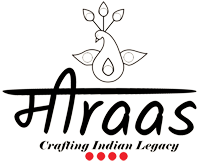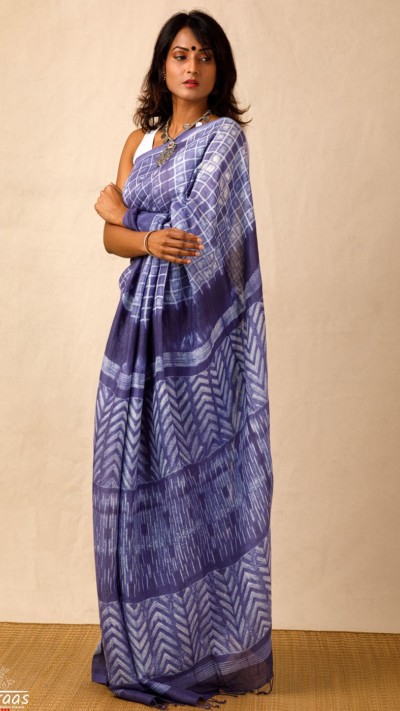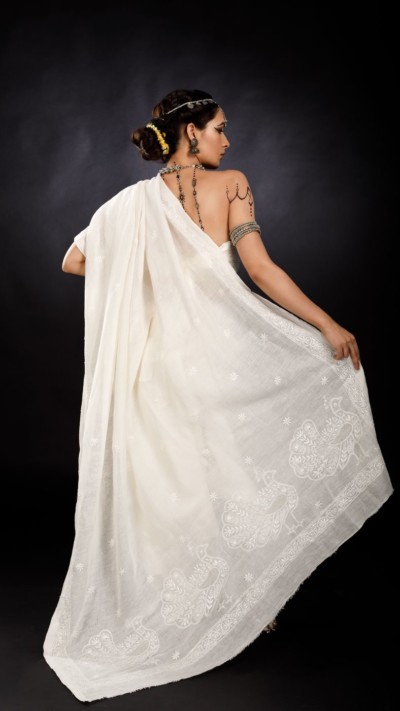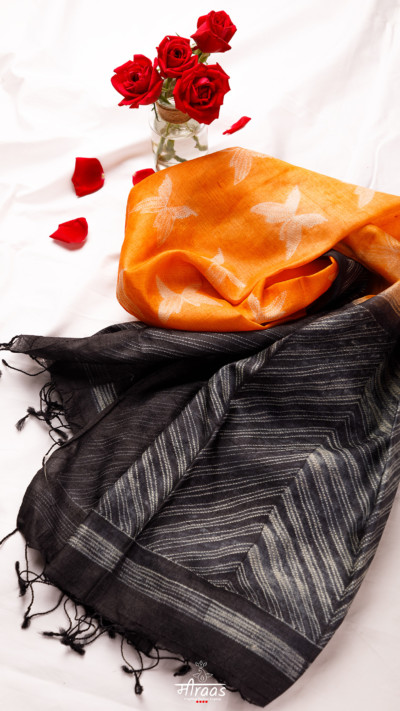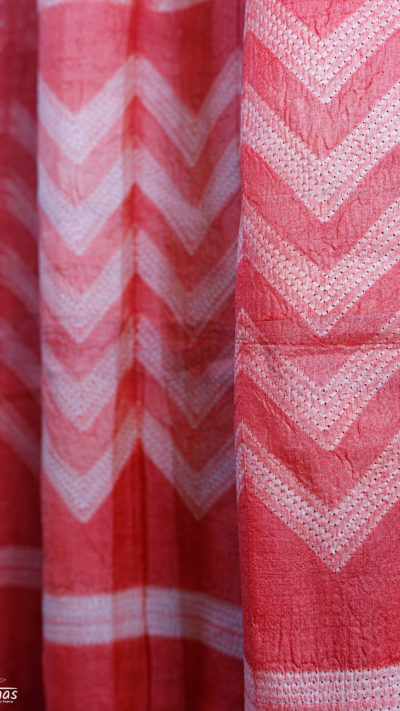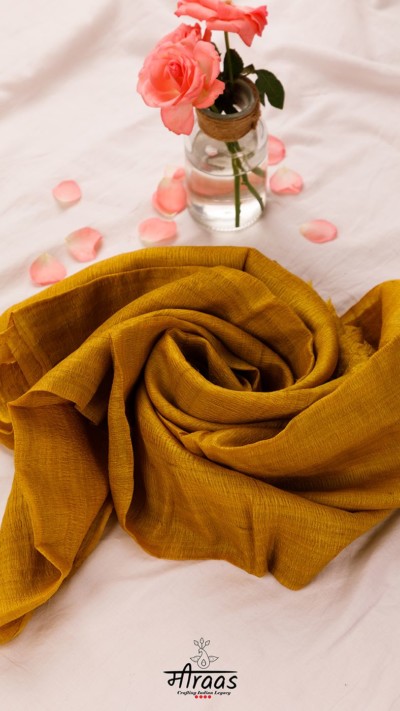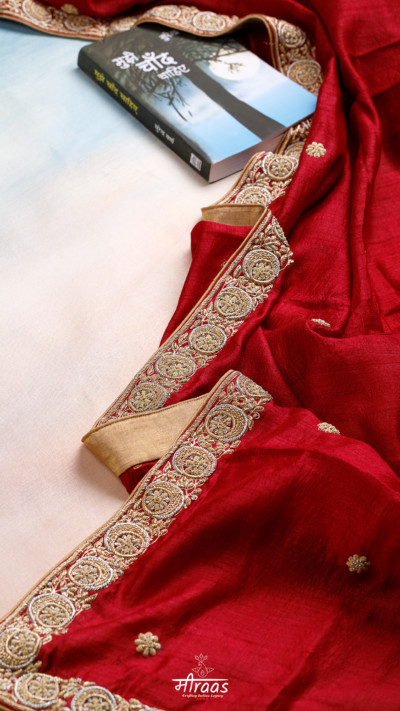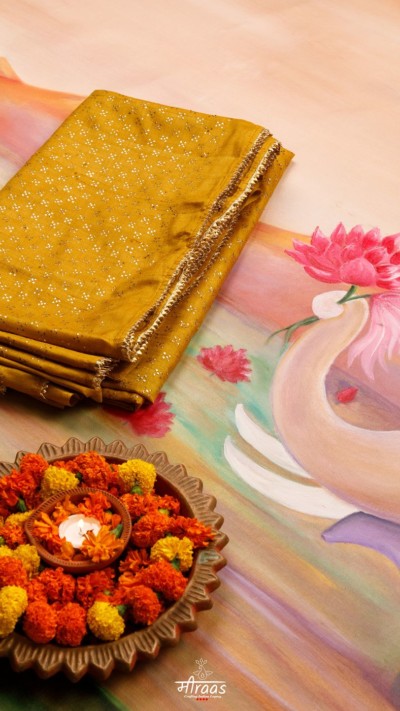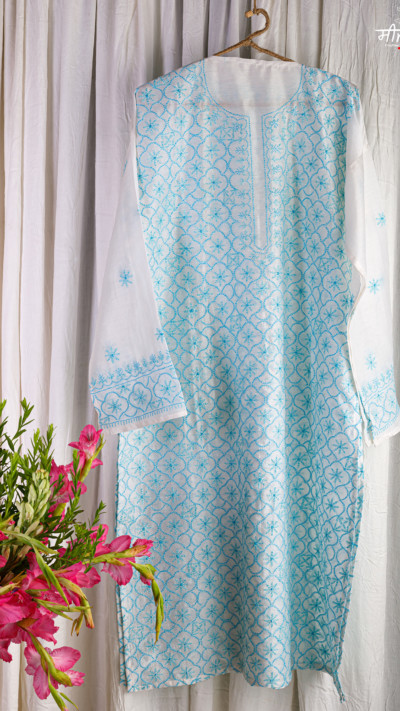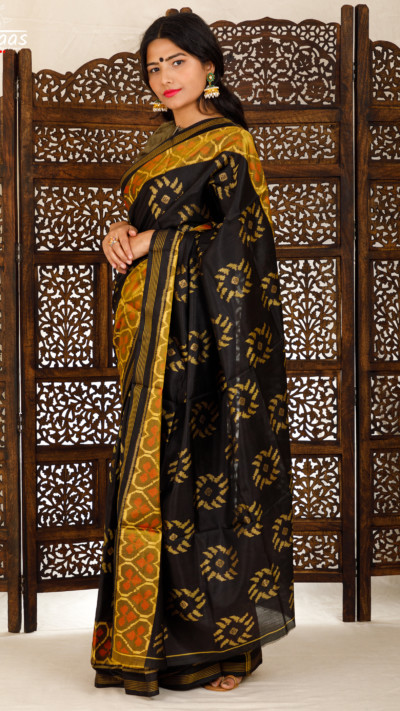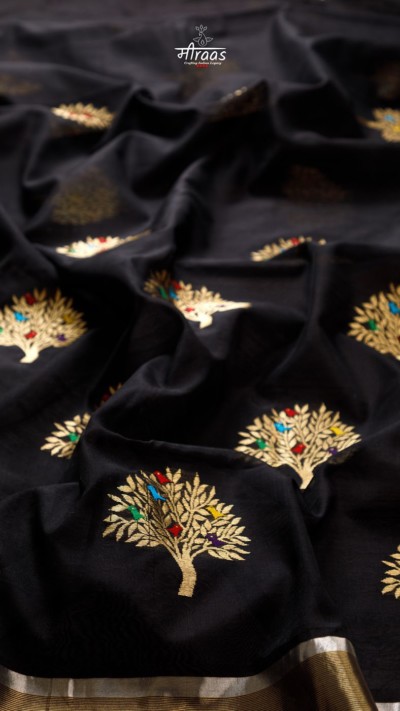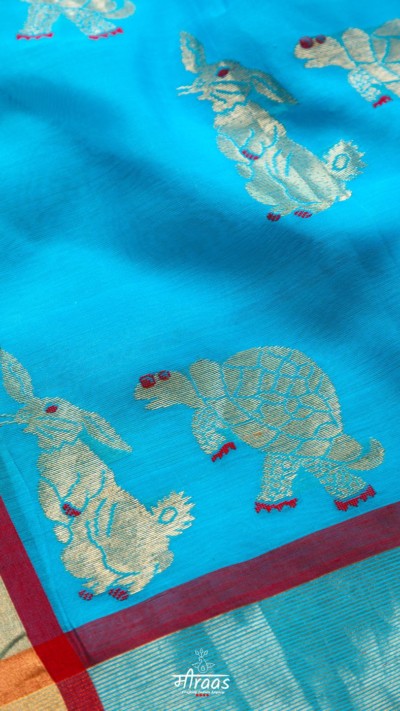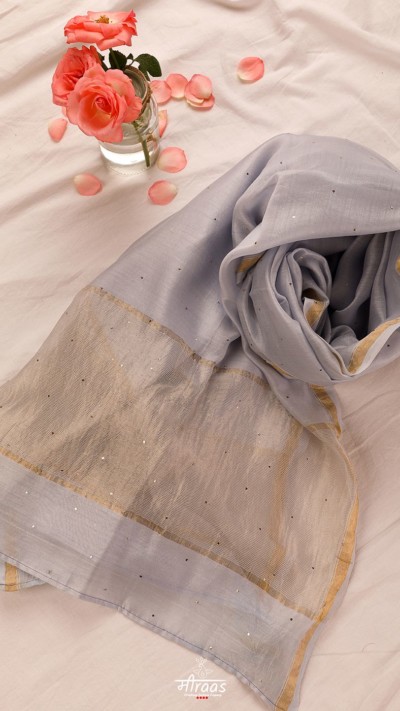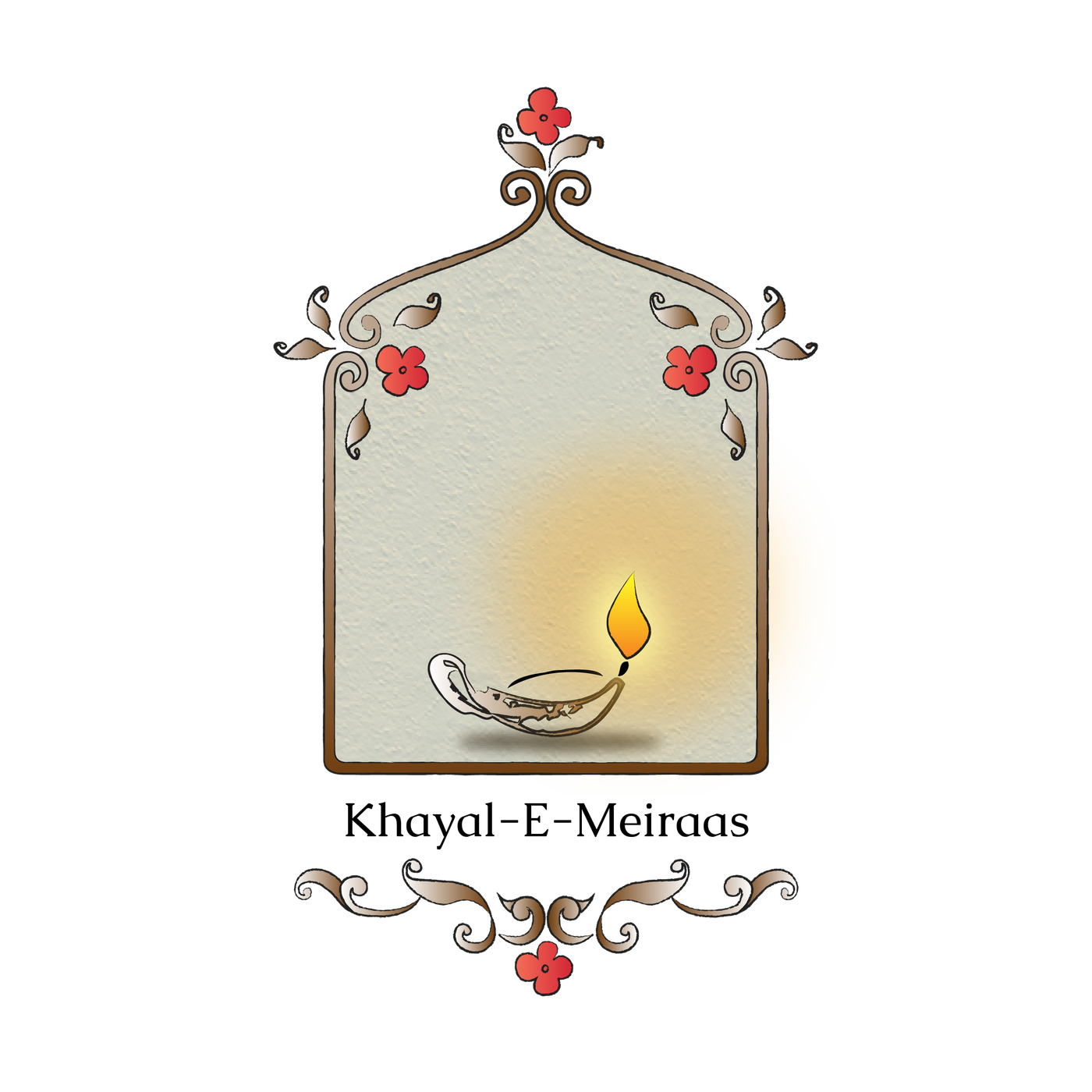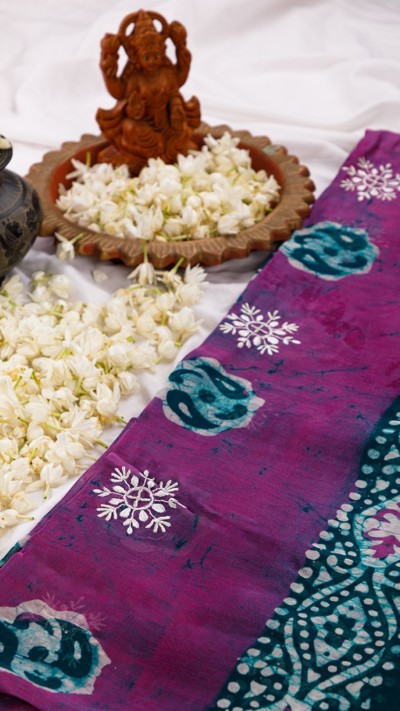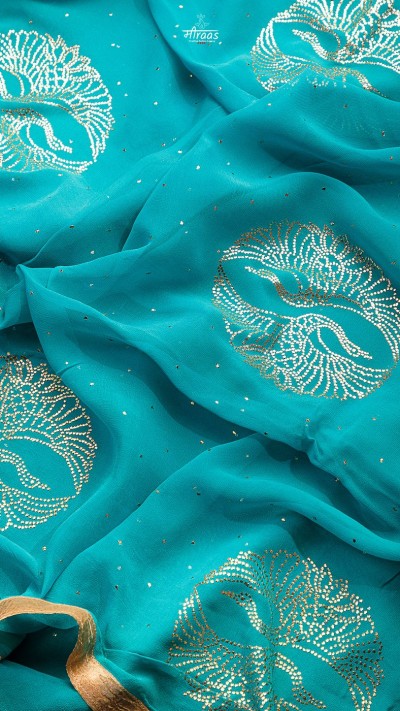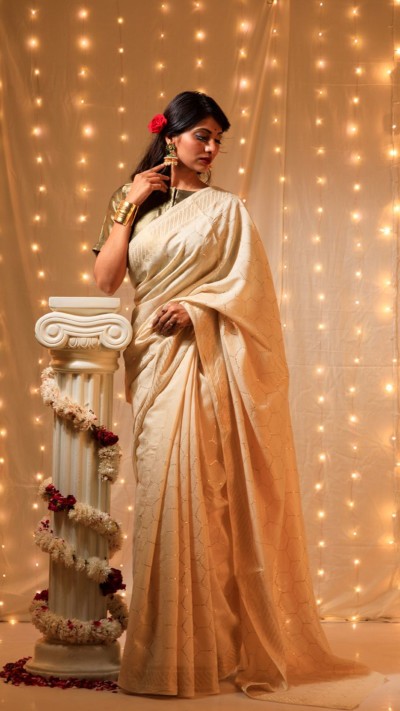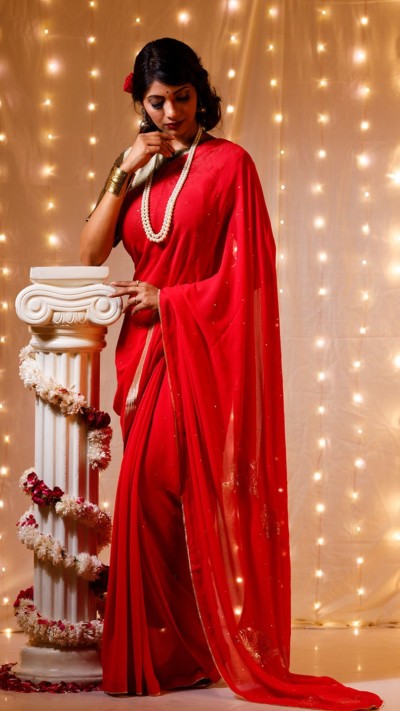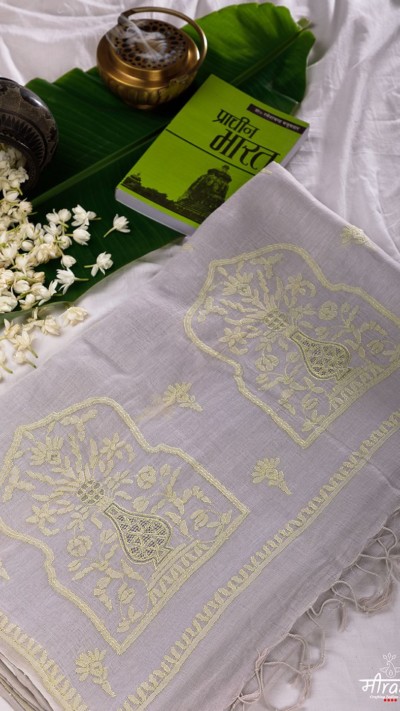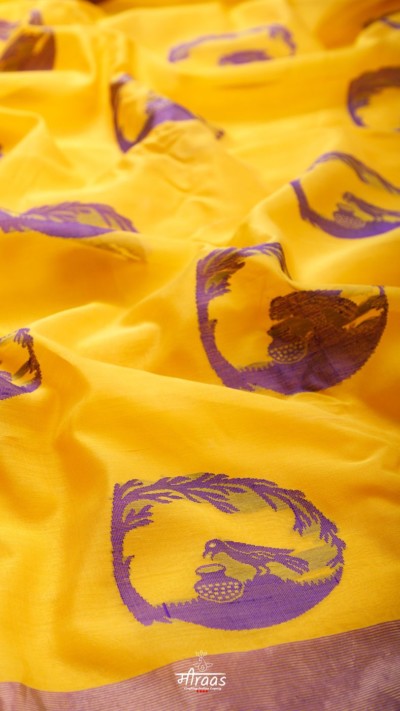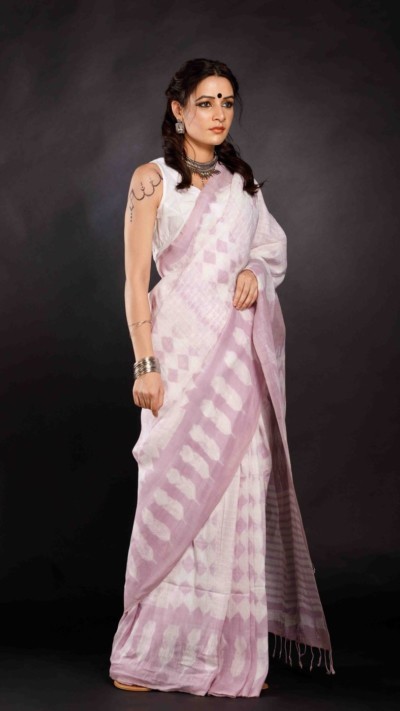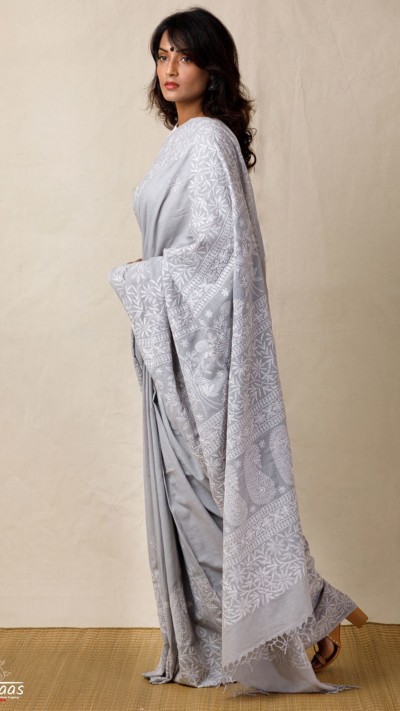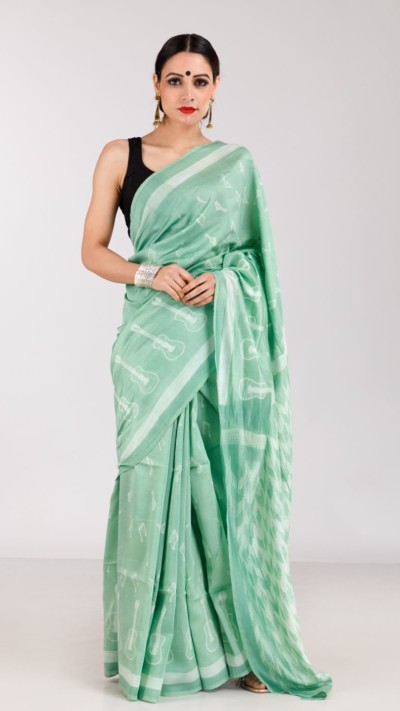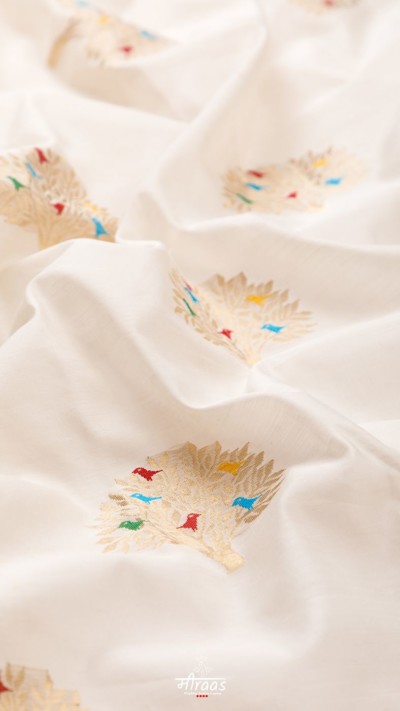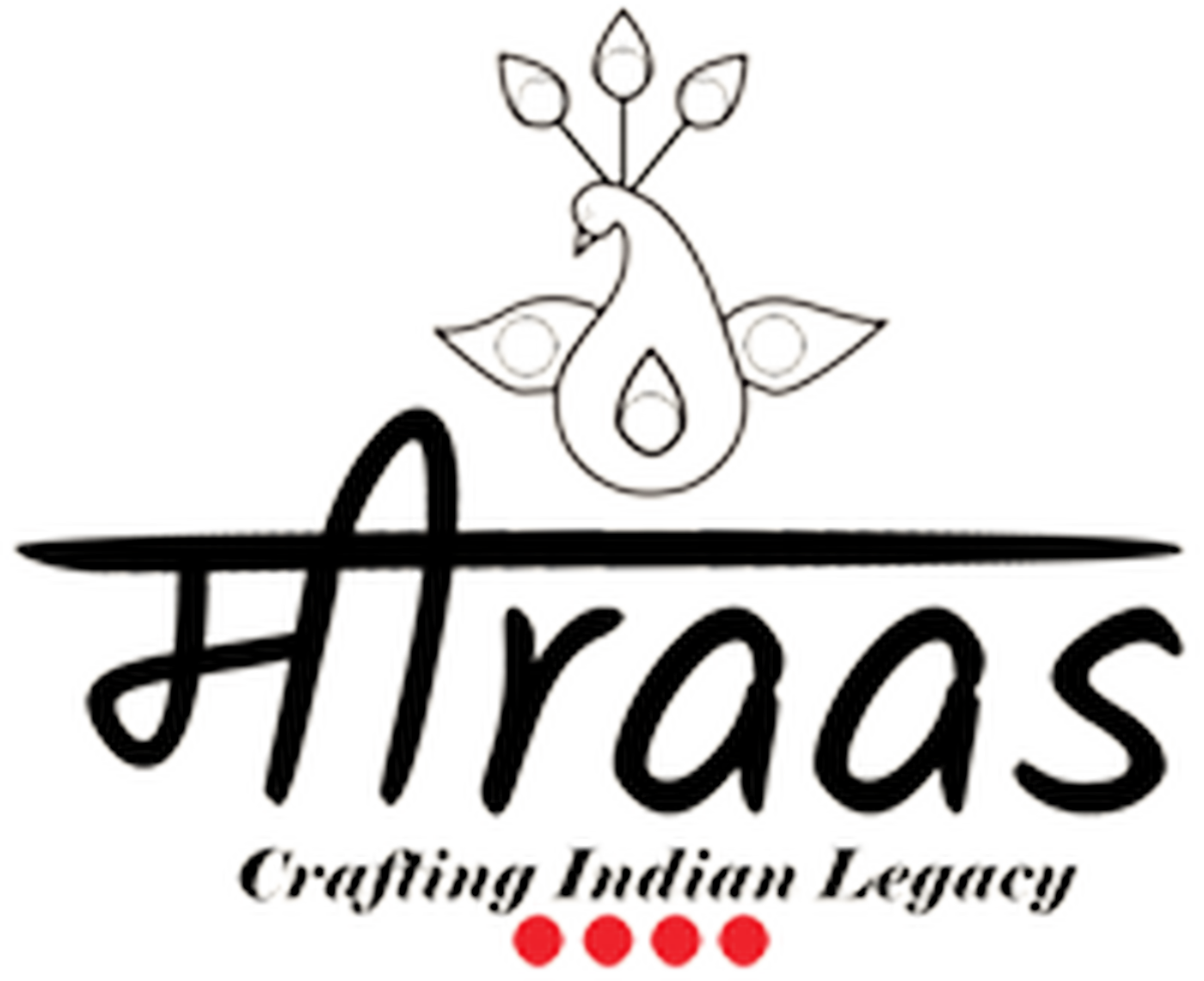
Please, enable Wishlist.
- Home
- Shop
- Dhanlakshami Chikankari Saree
- Advait Mens’ Chikankari
- Power Of Silence (Chikankari Kurta Edit)
- Ready To Ship
- Aari Zardozi
- Luxury Chikankari Dupattas
- The Wedding Collective
- Chikankari Statement Blouses
- Umrao Mukaish Collection
- Dopehri Chikankari Casuals
- Rajnigandha
- Rang Deenhi Shibori Collection
- Curated By Meiraas
- Saree
- Kurta
- Dupatta
- Blouse
- Top
- Stole
- Pants
- Handloom Chanderi
- Handloom Maheshwari
- Handloom Linen
- Handloom Cotton
- Handloom Organza
- Handloom Silk
- Cotton Silk
- Blog
- About
- Sustainability
Filter by categories
Filter by price
FILTER BY FABRIC
FILTER BY CRAFTS
Indigo Purple Shibori Handloom Linen Saree
₹15,000.00
THE SUSTAINABILITY QUOTIENT (TSQ):
- 120 Count Linen x Line Handloom saree: The Linen is finest quality and Handwoven for Meiraas on order
- Linen weave commissioned for Meiraas, therefore full quality control
- Thrice filtered Azo Free Dye for best & most sustainable results.
POSHAAK (detailed process about the garment)
We will go into detail in explaining our Nui Shibori process. While there are many Nui Shibori sarees available everywhere, most lack the intensity & design aesthetics; possibly this is why, despite being a beautiful art that attracts many, Nui Shibori has also seen a clutter of unfinished or less finished products that render the buyer confused about the quality.
Our Nui Shibori designs are first designed on paper, and the traced on fabric. The fabric is given more folds while creating resist pattern to increase the intensity of the design. To create resist on so many folds, a thicker needle, than usual, is used to do embroidery on the traced pattern (embroidery is done via sewing machine). Please note that these 2 steps - more folds & thicker needle that penetrates the folds - are critical to create the intense design pattern of Nui Shibori.
If the needle does not penetrate all layers, then you cannot see the clear holes on the fabric that are the mark & beauty of Nui (Embroidery) Resist.
Post embroidery, the embroidery threads are meticulously pulled to create resist (since we use very premium fabrics, this process takes time as a careless pulling can damage the fabric).
The dye is filtered thrice; this step is another important step, as Shibori is about colour textures on resist tie & dye. The smoother the pigment, the more beautiful will be the end result.
After dying, the threads of resist are meticulously pulled out, another laborious process, as one wrong pull will render the whole saree damaged. The saree is then washed in salted water to fix the colour & dried.
Our Shibori sarees win hearts wherever they go. They are stunning and intense in their design palette. The colour used in this saree is Indigo pigment mixed with Purple pigment which makes the saree give a mix of both colours in different lights!! A truly remarkable saree.
Please Note that Linen is a thermostatic fabric & absorbs & reflects back colour according to its nature. In white light the colour will carry deep Indigo Hue, & in Yellow light, its Purples will come out. This is the nature of both the colour & fabric and its beauty. Please factor this in when making the purchase.
Please Note: Slight wrinkles are part of Pure Linen texture. Linen is the most low maintenance fabric. Ideally before draping this saree, take it out and spread it and hang somewhere at least a day before; its wrinkles will smoothen significantly. Mostly it should be worn with slight wrinkles, yet if you wish to iron the dhobi press will be fine, with a cloth on top.
Add to cart
Made on Order – Yakshi Shwet
₹39,500.00
An ethreal White Resham Chikankari saree on Handloom Linen fabric, with an antique motif (250 years old plus), of glorious White Peacocks! One of our most requested & ordered sarees.
This signature saree of Meiraas is Made on Order only. Please email us at namaste@meiraas.com for colour and fabric customisation. You can try this saree in Pure Chiffon fabric as well.
The Sustainability Quotient (TSQ):-
Add to cart
- Resham Chikankari (Hand Embroidery Practised Since Ancient Age)
- Hand Picked Ancient Archived Motifs/ New Own Created Motifs.
- Conceptual & Exclusive Chikankari Artwork
- Handloom Linen
- Museum quality Chikankari sarees that can be handed down generation to generation as a treasure.
Clementine Black
₹4,500.00
The colours Clementine citrusy orange & Coal Black come alive on this beautiful Tussar Silk Dupatta with Hand Dyed Shibori. The rich silk fabric is all-weather & the colour is stunning to wear with any neutral colour attire.
Indian Nui Shibori Stole on Tussar Silk (Pure) fabric.
Please Read:
Indian NUI Shibori is a varied version of the original Japanese Nui Shibori. The Japanese Shibori is done only by hand & generally makes one big pattern on a small swatch of fabric.
In India, this method varies. The patterns in Indian NUI are drawn by hand on papern, and then sewn by sewing machine allover the fabric.
The handmade process involved here is drawing the pattern, tracing on fabric, tying & dyeing post machine embroidery, opening of all tie to reveal final product, finishing treatment (eco friendly).
Note: These days a lot of Digitally made Shibori from India is doing the round of market that looks very intricate in the first look. However on deeper 2nd look, you see that the NUI holes (made from sewing machine embroidery) are barely visible & light cannot pass through them. Therefore please bear in mind that the Indian NUI Shibori will have prominent needle marks in pattern (refer to the last image).
Add to cart
Coral Red
₹3,900.00
The beautiful shade of Coral Red comes alive even more in this Silk Shibori stole with white Shibori Patterns of Waves.
Indian Nui Shibori Stole on Tussar Silk (Pure) fabric.
Indian NUI Shibori is a varied version of the original Japanese Nui Shibori. The Japanese Shibori is done only by hand & generally makes one big pattern on a small swatch of fabric.
In India, this method varies. The patterns in Indian NUI are drawn by hand on papern, and then sewn by sewing machine allover the fabric.
The handmade process involved here is drawing the pattern, tracing on fabric, tying & dyeing post machine embroidery, opening of all tie to reveal final product, finishing treatment (eco friendly).
Note: These days a lot of Digitally made Shibori from India is doing the round of market that looks very intricate in the first look. However on deeper 2nd look, you see that the NUI holes (made from sewing machine embroidery) are barely visible & light cannot pass through them. Therefore please bear in mind that the Indian NUI Shibori will have prominent needle marks in pattern (refer to the last image).
The names of the stoles are creative & not an indication of exact colour match with the name provided. Please bear that in mind when making the purchase.
Add to cart
Haldi Handloom Desi Tussar Kurta Fabric
₹4,700.00
Haldi yellow coloured beautiful Handwoven Desi Tussar Silk Kurta Fabric from the looms of Bhagalpur, Bihar. This is a must have ideal Kurta/Dress Fabric for any season, especially for festive winter occasions.
Pair them with plain Cotton Silk pants in same colour for classy monochromatic ensemble.
Styling Tip: Will pair beautifully with our The Crown Gold Zari Silk Chikankari Dupatta
What is Desi Tussar?
In India, mainly 4 varieties of silk are produced - Tussar, Eri, Mulberry, Muga. Out of these, Mulberry Silk is cultivated silk, whereas the rest 3 silks are Wild silks. This is an important distinction, this means yarn for the wild silks are obtained from indigenous silk worm species feeding on wild forest tree leaves. Tussar Silk yarn is extracted from silk worms that feed on wild forest trees and has a natural golden glow. Its weaving is centred mainly in Bihar, Jharkhand and Chattisgarh. Please note like all Tussar Silk, this is Wild Silk, handspun, thigh reeled and Handwoven. Desi Tussar is just a colloquial term used by weavers of Bhagalpur, Bihar to indicate towards the purest variety of woven Tussar Silk yardage. The same fabric and process will be called Kosa Silk if woven in Chattisgarh. The silk you are seeing here is therefore the purest variety of Handloom Tussar Silk. Desi Tussar term is just used here for colloquial purpose.
Add to cart
Chandrakala
₹60,000.00
FROM THE VAULT COLLECTIVE
Chandrakala is our final firm foray into the World of Aari & Zardozi art of Lucknow. We always wanted to do this art, but only for Museum Quality wearable art pieces, & nothing less!! Chandrakala is just that.
KHAYAL (moodboard):
Chandrakala, or the art of crafting Moon, is a labour of extensive research we did before launching this Vault Collective Zardozi Dupatta, crafted in Lucknow. We visited the museums of Jaipur, & in one of them saw a Red silk odhani, with Moons crafted on it with Real Gold dabka wires. The antique dupatta was torn at some places, telling stories of a once glorious past, but was carefully preserved in the Museum. It was reaching out to us with a gaze that was almost saying "Resurrect Me!!". That was the moment we decided this will be our first Zardozi Dupatta. We could not photograph the Dupatta, & neither creating the exact replica was in our minds. We did have a Chikankari motif, an old one, that had a beautiful Chaand border (see here Chaand Mayur Dhanlakshami Chanderi Saree). We decided to re create a format of that antique motif that was so reminiscent of the Maharani's Dupatta we saw, that we made a Zardozi "khaaka" out of it. The fabric used was pure Handwoven Tussar Silk to create that Regal journey!! - Vidhi Rastogi, Head of Creative, Meiraas
POSHAAK (about the saree):
Chandrakala Dupatta is made on Handwoven Tussar Silk that is certified by Silk Mark of India. The fabric is supple and perfect to hold and add to the grace of the regal work on it. The border is embroidered with a beautiful & unique Chaand Border (read above), and has been embroidered using both Silver & Golden Dabka wires. The Dabka is extremely fine quality, please use Zoom to see the intricate detailing. The 4 side heavy border is complemented with small flower bootis in the body. To take this further, the dupatta is finished with Handwoven Gold Pure Zari Silk selvedge detailing, to make it one of a kind outstanding Dupatta.
It is perfect as a one time investment to take on Lehengas, Kurtas, as a Light Shawl on sarees. This is a perfect gift for a new Bride as well, she will cherish it forever and pass on her legacy to her future generations.
Important: 1 Dupatta is Ready to Ship.
Add to cart
Made On Order | DEEPMALA
₹48,000.00
This saree is MADE ON ORDER and will take maximum 13 weeks to get made after placing the order. Stock quantity is mentioned to enable placing order.
Please email us at namaste@meiraas.com for Colour & Fabric (Pure Georgette Silk, Pure Chiffon, Handloom Mulberry Silk, etc) customisation.
Gorgeous Mustard Tussar Silk Saree with allover dense Mukaish Embroidery. The saree is a class apart piece of art & an Heirloom Collectible!!
THE SUSTAINABILITY QUOTIENT (TSQ):
Add to cart
- Very fine quality heritage Mukaish Embroidery vis a vis thicker work prevalent in the market in general
- Full ghutaai (rubbing the Mukaish) process in the traditional manner followed to make the work high quality & finished. Please note this process is most ignored or loosely done to cut costs.
- High quality dye
- Finished with expert tailoring only.
White Blue Cotton Silk Royale Kurta
₹10,500.00
White Cotton Silk Kurta with Front & back full panel Ek Daana Tepchi Embroidery in Turquoise Blue, inspired by Jaali Khidki of Nawabi Architecture. The Safed & Firoza is a blend favoured heavily by Nawabs. Stitching of the Kurta is complimentary by Meiraas, along with Detachable Slip. Please choose your size from the size chart.
The Sustainability Quotient (SQ):
1. Skilled Resham Hand Embroidery
2. Ek Daana Painstaking Tepchi.
3.Higher price paid to the artisans than regularly paid wages in the market .
Additional Details: This Kurta can be stitched uptil sizes S (small) to XXL (Extra Extra Large) only, with same size detachable slip. Please select your size & we will stitch it complimentary with slip.
Ready Length: Approx. 44 inches.(this is meant to be 60s inspired knee length or just below the knee)
Add to cart
Rajkot Patola Ikat Pure Silk Saree
₹15,000.00
" This saree was love at first sight for me! Two sweet Rajkot Patola weavers met me sometime back and opened their treasure box full of most supple soft silk sarees. That was my first introduction to Patola weave. Later I found that Patola sarees are woven in two towns in Gujarat - Rajkot & Patan. The Patan Patola is hands down the most premium version with its double Ikat starting in lakhs. The Rajkot Patola is its cousin, that though not as regal as its rich counterpart, is still one of most supple and graceful weaves. This is a Single Ikat Rajkot Patola with lovely highlights of Gold and Burnt Orange on glistening black pure silk body. The saree is incredibly soft and its pleats form & fall like a poem. It is perfect to drape on festive, wedding or puja occasions" - Vidhi Rastogi, Head of Creative, Meiraas
The saree is Black with Gold chakra Ikat weaving and gorgeous border of Gold and Burnt Orange Ikat pattern. The saree is a must have!
Add to cart
Sutradhar Black – Conceptual Chanderi Handloom Saree
₹10,000.00
"Panchtantra was a collection of Chanderi sarees I conceptualised & designed in 2018, & executed somewhere in 2019. I wanted to introduce the iconography of the tales of Panchtantra I had grown up reading & whose learning I always imbibed in me. Sutradhaar was a saree added to the Panchtantra collection, and depicts a Golden Tree of Wisdom with small birds that often in Panchtantra tales, act as story narrators of Sutradhaar. " - Vidhi Rastogi, Head of Creative, Meiraas
Gorgeous Black Handwoven Chanderi saree with Pure Zari Gold motifs of Tree and further meenakari motifs of colourful birds perched in the tree running all through the saree!! A truly spectacular saree!!
Add to cart
Kacchua Khargosh – Conceptual Handloom Chanderi Saree
₹9,800.00
"Panchtantra was a collection of Chanderi sarees I conceptualised & designed in 2018, & executed somewhere in 2019. I wanted to introduce the iconography of the tales of Panchtantra I had grown up reading & whose learning I always imbibed in me. The Kachua Khargosh (The Hare & The Tortoise) story is relevant even today & especially poignant for Sustainable Ventures. Even today, so many start ups want to take the leap of the Hare, & yet the Sustainable businesses should always be slow & steady like the Tortoise " - Vidhi Rastogi, Head of Creative, Meiraas
Aqua Blue saree depicting Rabbit & Tortoise motifs. The saree has allover motifs of Rabbit & Tortoise, with an especially crafted Palla. The saree is Handwoven & has EXCLUSIVE (first time done) motifs of Rabbit & Tortoise. Motifs are developed by Meiraas from art work to weaving stage.
Add to cart
Badra
₹2,600.00
The Dupatta is pastel Bluish Grey, please keep that in mind when making the selection.
The Sustainability Quotient (TSQ):
Add to cart
- Mukaish Hand Embroidery with proper "ghutaai" - this means Mukaish embroidery has been rubbed using old technique of filling pebbles in a bottle and rubbing on the embroidery, instead of new age roller press method. This one method ensures long lasting Mukaish. In itself Mukaish is more sustainable craft that sequins or "salma sitaara" embroidery, as Mukaish never comes off, maintaing the look of the garment for much longer time.
- Handloom Chanderi Dupatta woven in Chanderi, MP.
- Azo Free, thrice filtered, dye
